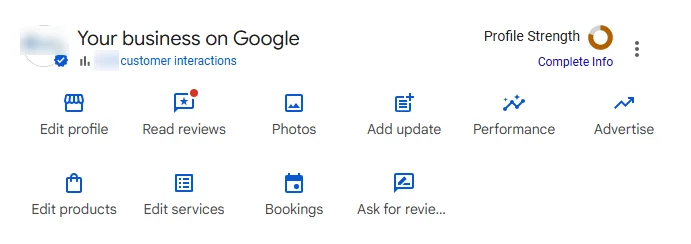Writing quality content should be a key aspect of every SEO strategy. But when is your content considered good or high-quality? And does quality mean the same for your users as for Google? In this article, we’ll discuss creating content and how you can make sure it hits the mark. It will require some creative writing skills. But don’t worry, you don’t have to become the next big author! By focusing on the right things, you can create high-ranking quality content that your users will happily read.
What is quality content?
That is the million-dollar question. Knowing how to write good content helps you get more visitors, higher conversions, and lower bounce rates. But who determines the quality of your content? The easy answer: your users. However, this also makes creating the right content more difficult. Because every user is different and has a different search intent. They have, however, one thing in common: every user knows what they want.
Although your users eventually determine the quality of your content, you can take a few steps to ensure you end up with well-thought-out, readable, and attractive content. In other words, content that’s eligible to be considered high-quality by your users and search engines. Luckily, a lot of the aspects that users will appreciate about your content are the same as the aspects search engines look for in quality content.
How search engines determine quality content
Search engines want to present their users with the exact content they seek. Content that is helpful, reliable and people-first and aligns with their current search intent. To help you create good content, Google has an acronym that you can consult: E-E-A-T.

Search engines decide on what is content quality by assessing a number of things – relevance, clarity and helpfulness, credibility and uniqueness. This all ties into the importance of E-E-A-T (Experience, Expertise, Authoritativeness, and Trustworthiness) in any strategy around brand or topical authority.
Alex Moss – Principal SEO at Yoast
The acronym E-E-A-T stands for Experience, Expertise, Authoritativeness and Trustworthiness. In their ongoing search for the best content, Google has added this acronym to their search quality raters guidelines. They use this to assess and judge the quality of online content. Although it’s especially important for so-called YMYL websites (“Your Money Your Life” – sites that are related to well-being, health, finances or safety), these guidelines apply to all content out there.
Why is quality content important?
Quality content is the foundation of a strong brand, helping you establish authority and expertise in your industry. Well-crafted content speaks directly to the needs of your audience, providing valuable insights that position your brand as a reliable source. Whether it’s through blog posts, social media, or in-depth guides, delivering high-quality content builds long-term relationships with customers, fosters engagement, and strengthens brand credibility.
Beyond its impact on branding, quality content plays a crucial role in SEO. As mentioned above, search engines prioritize helpful, well-structured, and informative content that truly benefits users. By focusing on producing valuable content that answers queries effectively, you can achieve higher rankings in the search results. This leads to increased visibility, organic traffic, and better engagement, which will help you grow your website sustainably. To scale content creation effectively, check out this guide on scaling content. Additionally, if you mainly write content for your clients’ website, make sure to check out our article on writing valuable content that your clients will love.
7 steps to start creating high-quality content
To ensure the quality of your content, there are 7 steps that you can follow. Let’s go into them in more detail.
1. Write for your readers, not yourself
If you have an ecommerce site, you want readers to know about the products or services you offer. If you’re a blogger, you want readers to get to know you and the topics that interest you. However, it’s also important to consider what your users want to read about. What interests do they have? What events or news do they follow that you can relate to your business? And what ‘problems’ are they trying to fix that have led them to your site?
The first step in creating high-quality content is ensuring it contains the information your audience is looking for. To find out what your users are looking for, you have to conduct proper keyword research. This will help you determine what subjects to write about and what words your audience uses. Keyword research also helps your rankings, as more visitors and lower bounce rates tell Google that your page is a good result to show in their search results.
2. Think about search intent and your goal
Search intent is the reason why someone conducts a specific search. It’s the term used to describe their purpose. For example, do they have a question they need answered? Or do they want to buy something online? Someone’s search intent makes a difference in how they consider the quality of your content. If it fits their need at that moment, then they will stay on your page longer. But if they need an answer to a question and the page they land on only tries to sell them products, they’ll be gone before you know it.
Match goals to different search intents
It’s important to consider search intent while creating content for a specific page. That’s why we advise you to match your goals to users’ different search intents. Is one of your goals to increase newsletter subscriptions? Then, you should add that subscription button to pages where users with an informational intent land. Does a visitor have a transactional intent (meaning: they want to buy something)? Make sure they land on a product or category page dedicated to the product they are looking for.
Of course, experience tells us it’s not always that black and white. Still, it’s good to consider your users’ search intent. It helps you determine the focus of your content and what call-to-actions you want to add. A great way to get started is by adopting a content design mindset. This mindset helps you produce user-centered content based on real needs. Also, we recommend looking at the search results for some input to create great content.
3. Make your content readable and engaging
Do you want to get your message across? And do you want people to read your entire blog post or page? Then, make your content easy to read. This means that you should:
- Think about the structure of your text and the words you use. Too much text without any headings or paragraphs, also known as a wall of text, tends to scare people off. Use headings and whitespace to give your readers some air while reading.
- Try to limit the use of difficult words and be cautious of the length of your sentences. Both can make your content harder to understand, which will slow down and frustrate your reader.
- Variation in your text will make it engaging. Use synonyms and alternate longer sentences with shorter ones to mix it up.
Another important thing to focus on: Have fun! And be conversational in your writing. This helps you write high-quality content that is different from your competitors’ and helps users get to know you and your brand.
Read more: 5 tips for writing readable blog posts »
4. Write with E-E-A-T in mind
Experience, expertise, authoritativeness and trustworthiness can all be used to improve your content. So how can you make sure to include these in your writing? We’ll go through them one by one and give you some pointers.
Share your experience
Although the acronym started as E-A-T, they added another E shortly after. This newly added E stands for experience. They prefer content that showcases knowledge or skills gained through first-hand experience. This can be gained through personal involvement or observations related to the topic at hand. To give an example, someone who has worked as an optician for many years will be experienced in the topic of eyesight. Or someone who has a prescription themselves will also have experience on the topic.
Keep reading: The new E in E-E-A-T, or the importance of Experience »
Be the expert in your field
The second E in E-E-A-T stands for expertise. Although it makes sense that this would be an important factor in determining the quality of content, it is trickier to evaluate. So what Google does is find out what it can about the author itself. What is their reputation when it comes to the topic at hand? What is their background? And what other (reliable) sources are they referring to? When it comes to this criterion, it will pay off to be clear about your expertise and where it comes from online.
Read on: The E in E-A-T: What is expertise? And how to show it? »
Show your authority
Related to expertise, the next letter stands for authoritativeness. An authority can be defined as a person or organization having power or control in a particular area. When you’re an authority on a topic, you often have the proper knowledge on it. That’s why official websites often have a higher chance of being perceived as the authority on a topic. But also aspects like qualifications and being associated with well-known organizations count towards this. If this one is tricky for you, don’t worry. It’s just one of the aspects Google looks for when determining quality. If this one doesn’t fit your blog or business, just focus more on the other letters in the acronym.
Keep on reading: The A in E-A-T: What is authoritativeness? »
Be trustworthy
The last one probably doesn’t come as a surprise, as this is something we all look for when browsing online. The trustworthiness of the content before you. Whether it’s for a product you want to buy or information that you’re looking for, trust plays a big role in how serious you take online content. If it doesn’t feel right, a user will hesitate in the best case and leave your website in the worst. Google’s guidelines are quite clear on how they determine the trustworthiness of a website: “An unsatisfying amount of any of the following is a reason to give a page a low-quality rating: customer service information, contact information, information about who is responsible for the website or information about who created the content.” So make sure to be clear on these and look for other opportunities to show your trustworthiness.
Read more: The T in E-E-A-T: What is Trustworthiness? How can you achieve it? »
5. Keep your content up to date
Another key element of writing high-quality content is ensuring it’s up-to-date and relevant. This means you have to update your content occasionally to ensure people can find the right information. But why is this so important? It shows your users that you’re on top of recent developments and can always provide them with accurate information. In other words, it builds trust and keeps your audience returning to your site.
Keeping your website and blog posts updated is also important for SEO, as this shows Google that your site is ‘alive’ and relevant. So, make sure you schedule a time to update your content regularly.
Keep reading: 10 tips to improve the quality of your page »
6. Invest time in site structure
The five steps we’ve discussed so far will help you write content that is easy to read and user-centered. Now, we’d like to highlight an equally important step: working on your site structure. It’s important because it will help users and search engines find your content.
Site structure refers to the way you organize your site’s content. When you structure your site well, search engines can index your URLs better. It helps Google determine the importance of your pages and which ones are related to each other. A good site structure allows users to find their way around your site more easily. It will help them find quality content in the search results and on your website. That’s why there’s much to gain from perfecting your site structure.
7. Use Yoast SEO to perfect your content
The last tip I want to share is the content analysis in our very own Yoast SEO plugin. This feature gives you real-time feedback on your content while you’re editing your page in the backend. It monitors whether you use your chosen keyword often enough and in the right places, it looks at text length and gives you feedback on readability. For example, it tells you when you use the passive voice too much, whether you’re using enough subheadings, gives you feedback on word complexity and the use of transition words. All of this and more is available in the free version to help you improve the readability and quality of your content.
The content analysis in Yoast SEO Premium goes a bit further and also does the following:
- Allows you to optimize your text for related keyphrases and synonyms
- Recognizes different forms of your keyphrase, so you can focus on writing naturally
- Recognizes singular and plural, and also tenses of verbs
- Gives access to our AI features, like Yoast AI Optimize, suggesting changes in your content
- Gives you access to all the Yoast SEO academy courses, including our SEO copywriting training!
Buy Yoast SEO Premium now!
Unlock powerful features and much more for your WordPress site with the Yoast SEO Premium plugin!
A quick recap on high-quality content
Good, high-quality content will positively affect your SEO in the long run. So, before publishing post after post (or page after page), make sure to keep the following in mind. Make sure to write for your readers, make your content readable, match search intent with your goals, be trustworthy, keep your content up to date, and work on your site structure.
The result? Good content that your readers will appreciate. This will positively affect your number of visitors, conversions and eventual revenue. If you want to learn more tips and tricks, make sure to read our guide to SEO copywriting!
Read on: SEO copywriting: the ultimate guide »
The post 7 tips to write good, high-quality content appeared first on Yoast.


The exploration of what constitutes “quality content” is such an intriguing topic! It resonates deeply with both content creators and consumers. I’ve always found that quality isn’t just a matter of informative or well-structured writing—it’s also about understanding the user’s emotional and informational needs.